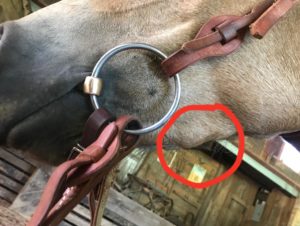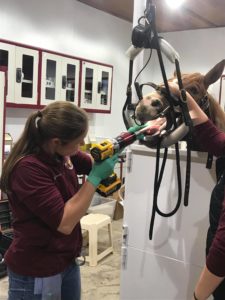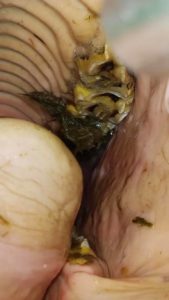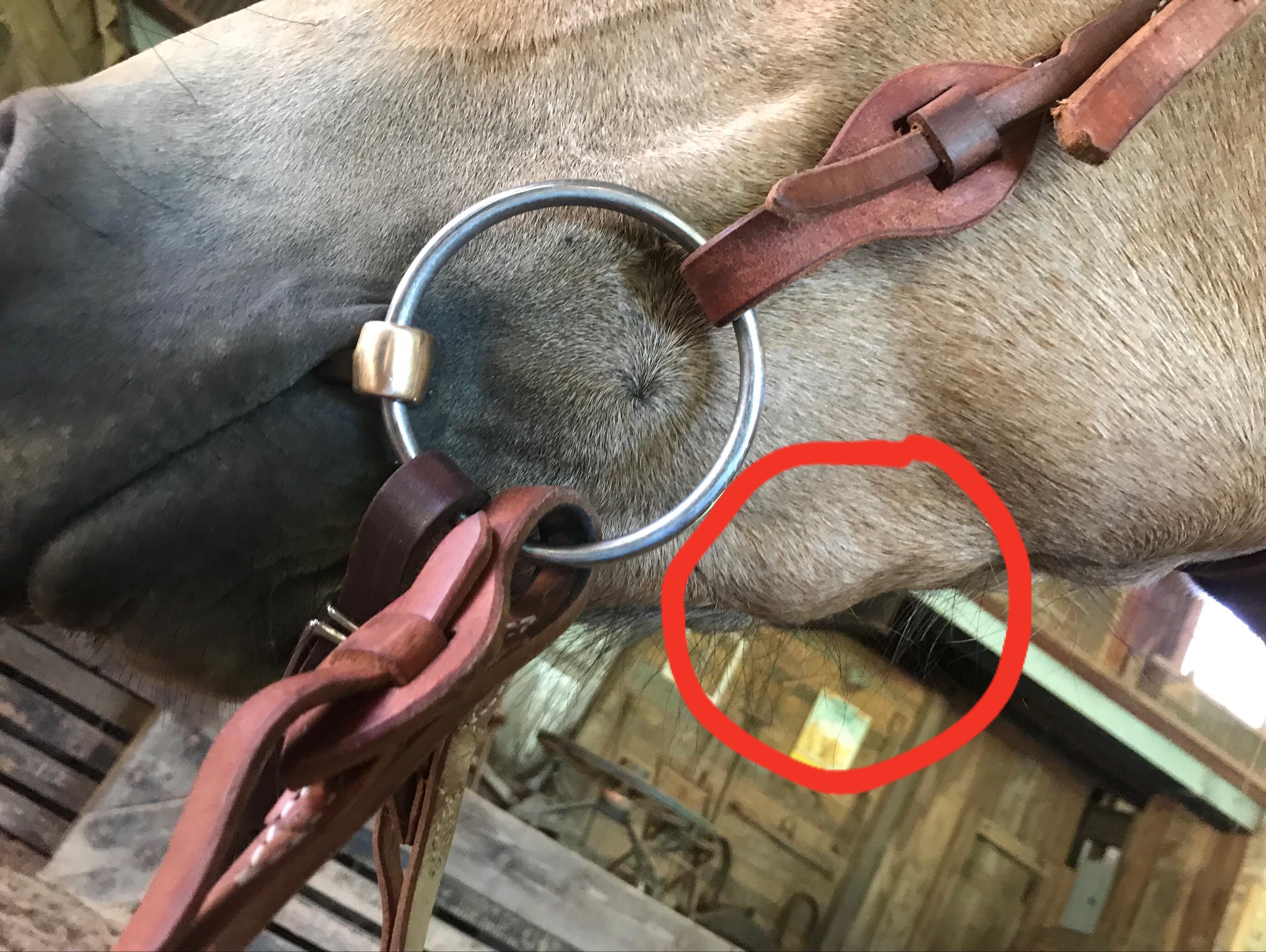
What are the bumps on my horse’s jaw line? Meet Pixie, a young, three-year-old quarter horse. Pixie came to a clinic of mine last week and her owner had been wondering about the cause of the unsightly bumps on her lower jaw that had seemed to pop up over night. These bumps were hard and seemed to be a part of the jawline itself. I explained that these were simply “eruption bumps” from Pixie’s adult premolars erupting and pushing the deciduous baby teeth out. This sparked a discussion about the importance of proper dental care throughout a horse’s lifetime.
Here are some answers to commonly asked questions about equine dental care:
At what age should my horse receive its first dental exam?
The AAEP (American Association of Equine Practitioners) encourages horse owners to have their young horse’s mouths examined by your veterinarian soon after birth. Your foal’s mouth will gain 16 baby teeth before it is three weeks old! It is important for your vet to assess your young horse’s mouth to check for any abnormalities in jaw development early on that may affect the foal as it grows and more teeth come in.
What is a “float” and what is the purpose?

A float is a procedure where your veterinarian will file or rasp the sharp edges of the teeth to create a uniform chewing surface. An experienced veterinarian will also be able to use a float to correct dental abnormalities. It is typically recommended that your horse receive a dental float at least annually; though often times, horses under five may need floated every six months.
When do horses start to loose their baby teeth?
Around the age of 2 1/2, your horse’s adult teeth will begin to erupt and at this time, their deciduous baby teeth will have worn down to a “cap”. Sometimes in young horses, the adult tooth will have trouble pushing the cap loose. (Which can sometimes be the cause of the eruption bumps.) If left unaddressed, this could result in an uneven wear pattern of the teeth causing pain, trouble chewing, weight loss and behavioral problems. By the age of five, a horse should have completed the process of loosing caps and erupting adult teeth.
Why would my horse continue to need floated after age five?
Your horse’s adult teeth are originally four inches long. Most of that tooth is concealed below the gum-line. As the horse chews, its teeth slowly wear down over time. The wear process will cause sharp edges and unevenness, causing the horse pain and discomfort while chewing and often times creating ulcers and lacerations on the horse’s tongue and inner cheeks. As the tooth wears, it will continue to erupt into the horse’s mouth. The

goal is for all of the teeth to continue to wear as evenly as possible, so no one tooth is used up faster than another, which would cause issues as the horse ages. The photo to the left is an older horse with an uneven wear pattern which caused a gap in between his teeth. This gap becomes a place for food to become lodged which could become the beginning of gum disease.
Remember prevention is your biggest key to success! Don’t wait until you see behavioral problems in your horse before seeking out a dental exam. A regular float by a knowledgeable veterinarian will keep your horse comfortable and help him maintain the use of his teeth for years to come.
For a more detailed explanation of equine dentistry, the AAEP has a great, easy to understand article. https://aaep.org/horsehealth/everything-you-ever-wanted-know-about-equine-dentistry
Ashley Purdin


I always knew getting my horses teeth floated was a requirement, but I did not know that their teeth are roughly 4 inches long!
Curious what your thoughts are on vets using hand tools compared to electric tools. I have had different vets float my horses with electric tools as well as floated using hand tools. I have had both good and bad experiences from both, but do you have a preference of one over the other?
These blogs are wonderful information. Thank you for sharing!
Thanks for reading Sharon!